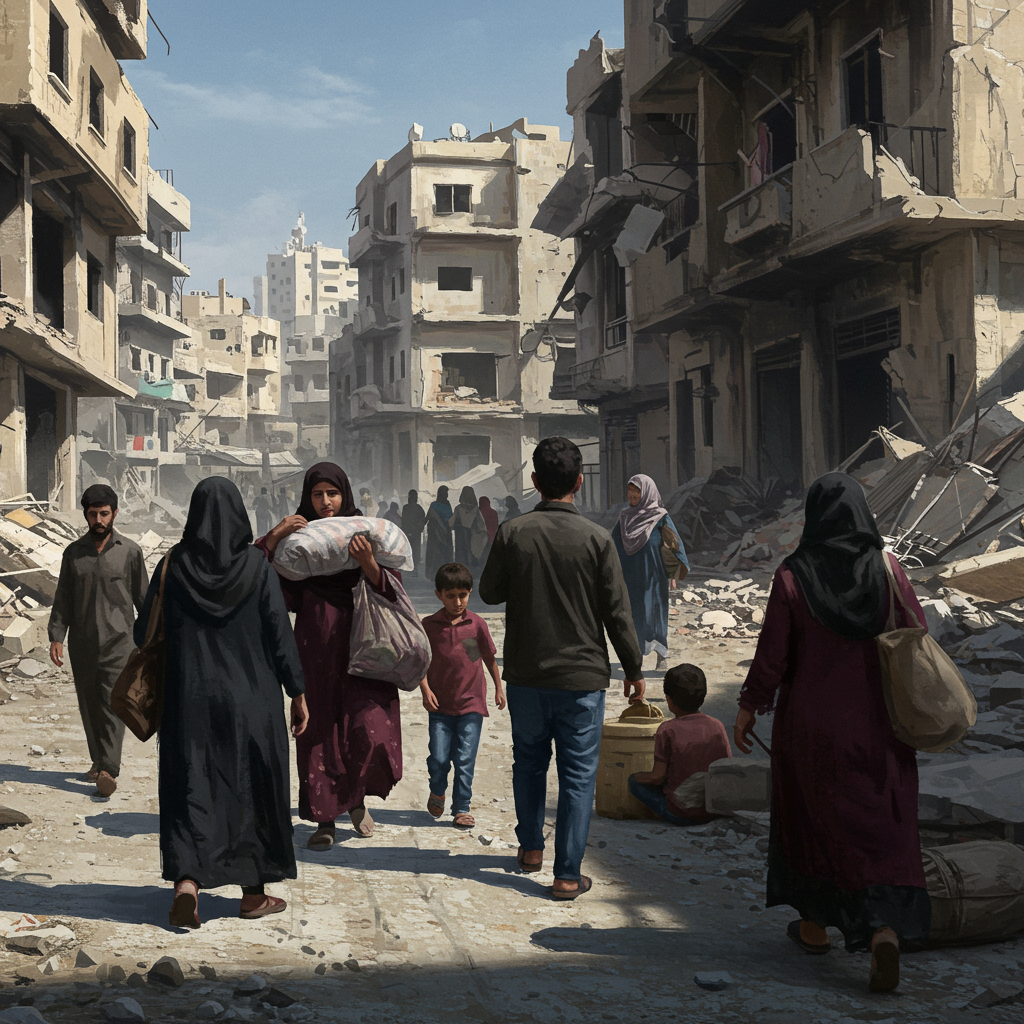Escalating Israeli military actions across the Gaza Strip on Friday resulted in at least 82 fatalities, with dozens of victims reportedly among those attempting to receive humanitarian aid. This latest surge in casualties underscores the perilous conditions faced by civilians seeking essential supplies amidst ongoing hostilities.
Hospital sources in Gaza indicated that at least 34 Palestinians were killed and several others injured by Israeli fire while waiting for vital humanitarian assistance in central and southern areas of the territory. The total death toll for Friday reached 82 Palestinians killed by Israeli forces across various locations. This figure includes individuals killed in an air strike that bombed a house located west of Deir el-Balah.
Analysis of Friday’s casualties shows the devastating impact on different areas: at least 37 people were killed in central Gaza, of whom 23 were identified as aid seekers. In Gaza City, another 23 people lost their lives. Southern Gaza saw 22 fatalities, with 11 of these also being individuals who were seeking aid.
A Deadly Pattern Near Aid Distribution Sites
The attacks resulting in deaths near aid distribution points are not isolated incidents. Since the Gaza Humanitarian Foundation (GHF) began distributions on May 27, reports suggest hundreds of people have been killed while attempting to access aid near these centers.
Figures provided by Gaza’s Government Media Office director-general on Thursday indicated a cumulative toll of 409 aid seekers killed and 3,203 injured since distributions began in late May. Another report citing local officials on Thursday provided slightly different figures for the same period, listing 300 aid seekers killed and 2,649 injured near distribution points. These figures highlight the consistent danger faced by civilians in these areas. Specific incidents include an attack on Thursday near the Netzarim Corridor in central Gaza where at least 16 aid seekers were killed by gunfire while waiting for food. Furthermore, UN officials have cited an incident on Tuesday, June 18, which resulted in 75 deaths, including 11 children, near non-UN militarized food distribution sites.
Dire Humanitarian Crisis Deepens
The attacks compound an already catastrophic humanitarian situation in Gaza, where aid agencies warn the entire population faces the threat of famine. This crisis follows a total Israeli blockade imposed from early March to late May, which severely restricted essential supplies.
Beyond food scarcity, a “man-made drought” is also taking hold as water systems collapse. UNICEF has warned that only 40 percent of drinking water production facilities remain functional, stating that “children will begin to die of thirst.” Testimonials from the ground describe women and children being injured while trying to receive food aid, including a young boy who was fatally wounded by a tank shell.
Challenges in aid delivery are exacerbated by a lack of clear public information regarding the opening times and locations of distribution sites, some of which are situated in combat zones. This confusion contributes to mass casualty events. Communication is further hindered by intermittent internet connectivity issues across Gaza, preventing access to crucial updates.
The Gaza Humanitarian Foundation, described by some as a “shadowy Israeli- and United States-backed group,” has faced significant criticism from the United Nations for its perceived “failure” to ensure the safe delivery of supplies. Critics argue the GHF’s distribution system is “making a desperate situation worse.” In contrast, the GHF issued a statement on Wednesday asserting that it had successfully distributed three million meals across three sites without incident.
Strain on Healthcare and Regional Tensions
The ongoing military actions also place immense strain on Gaza’s healthcare infrastructure. The World Health Organization (WHO) has highlighted the critical state of facilities like Nasser Medical Complex in Khan Younis, struggling to remain operational due to “relentless strain and lack of supplies.” The hospital recently received over 300 injured people in a single day, operating at nearly double its capacity with shortages of vital equipment and staff. Its location within an evacuation zone further impedes access for healthcare workers and supplies like fuel, without which services face imminent shutdown.
The violence in Gaza occurs within a broader regional context, including recent exchanges of air attacks between Israel and Iran. Turkish President Recep Tayyip Erdogan commented on the situation, warning that the conflict is “quickly reaching the point of no return” and calling for an immediate end to the “madness.” He also criticized attacks on healthcare facilities, noting that Israel has allegedly carried out over 700 such attacks in Gaza alone while complaining about damage to its own hospitals, and reiterated calls for a ceasefire. The ongoing conflict has also led to international legal scrutiny, including genocide proceedings at the International Court of Justice and war crimes arrest warrants issued by the International Criminal Court against Israeli leaders.



